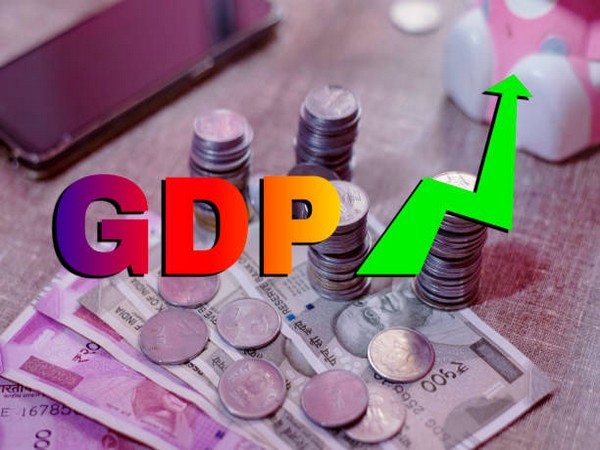New Delhi: The World Bank's South Asia Development Report for April 2024 underlines that output growth in South Asia has exceeded expectations and remains stronger compared to other emerging market and developing economies (EMDEs).
This is largely attributed to the impressive economic expansion of India. The growth in South Asia continues to outpace that of other EMDEs, primarily due to India's robust economic expansion.
Led by India’s vibrant economic breakthrough, South Asia has been performing better on various macroeconomic fundamentals. Inflation and the balance of payment pressures have eased significantly. Supply chains have shown great resilience to the logistic challenges posed by the Red Sea conflict and the Panama Canal drought.
Furthermore, several South Asian governments have been actively streamlining their macroeconomic policies and capital controls, while simultaneously undertaking economic adjustment and reform initiatives in conjunction with the International Monetary Fund (IMF).
The output growth in South Asia is projected to be around 6.0–6.1 percent for 2024–25, driven by India's sustained growth. India’s GDP is projected at 7.5 percent in FY 2023-24,supported by a rapid increase in investments and Government consumption. Inflation remained within the Central banks’ target range of 2–6 percent and is expected to subside in the coming quarters.
India’s composite purchasing managers index (PMI) stood at 60.6, well above the global average of 52.1. A higher-than-global average composite purchasing manager’s index (PMI) shows robust growth in the manufacturing and services sectors. The growth in services sector is spearhead by strong growth in construction and real estate activity in the country.
In India, financial conditions have remained accommodative. Domestic credit issuance to the commercial sector (including public and private borrowers) grew by 14 percent (year-on-year) in December 2023, the fastest pace since 2013.
The nonperforming-loan ratio fell to 3.2 percent, foreign portfolio investment accelerated in FY 2023-24, resulting in all time high foreign exchange reserves. Due to robust digital system and prudent reforms, India direct and indirect tax collections have shown robust growth performance.
While globally countries are heading toward protectionism, leading to Trade fragmentation. However, India is becoming increasingly supportive of free trade. Recently, India signed free trade agreement with European Union Free Trade Association.
This is the third FTA signed in a succession, following those with Australia and the UAE. Moreover, RBI released Gross bank credit data, wherein export credit has hit a highest level in the past 12 months by the end of January 2024. Further, India registered its highest monthly merchandise exports in February 2024 so far in the current fiscal year.
The other country in South Asian region supporting the growth trajectory is Bhutan. In Bhutan, growth was stronger than expected in 2023 and forecasts have been upgraded for 2024– 25, largely reflecting strong exports of hydroelectricity and the re-opening of borders in late 2022. Moreover, Sri Lanka's economy is experiencing a revival, with the resurgence of tourism not only boosting growth but also leading to a substantial improvement in the current account balance.
However, Bangladesh witnessed a deceleration in its economic growth trajectory, declining from around 7 percent in FY2021-22 to 6.1 percent in 2023Q3. The imposition of trade and foreign exchange restrictions as a response to balance-of-payments pressures during 2022-23 played a crucial role in narrowing the current account deficit by significantly reducing imports.
The scarcity of imported intermediate goods hindered domestic economic activities. In Nepal, although the removal of import controls has resulted in an anticipated recovery in economic growth after a decline in 2023, there hasn't been a substantial surge in private consumption growth yet.
Afghanistan is also struggling with drought and deflation. In 2020–22, nearly 80 percent of the population was food insecure and 30 percent undernourished, on average. The country’s economy remains fragile, with widespread food insecurity and high unemployment.
While Pakistan, growth remains less than half its pre-pandemic average and industrial production remains well below its pre-recession level. Foreign reserves increased slightly, but are still not sufficient to cover 2 months of imports.
During the third quarter of 2023, the Maldives also saw a modest 2 percent growth compared to the same period in the previous year. This growth rate represents a significant deceleration from the remarkable 13.9 percent growth recorded in 2022. The tourism sector, a key contributor to its GDP, observed a notable contraction.
There are some policy challenges for the South Asian countries that need to be addressed in the medium and long run to sustain and propel the growth trajectory.
These include raising substantial revenues to meet increasing debt burdens, building climate resilience as it will improve energy efficiency in key industries, creating jobs, thereby enhancing employment for the working-age population to reap demographic dividends, and removing distortions in the financial system to encourage entrepreneurship and competition.
In conclusion, the South Asian region, spearheaded by India's robust economic expansion, maintains its position as a growth leader amidst global economic challenges. With output growth surpassing expectations and outpacing other emerging markets, South Asia demonstrates resilience and momentum. Improved macroeconomic fundamentals and proactive policy measures contribute to stability and growth.
Addressing policy challenges such as revenue generation, climate resilience, job creation, and financial system reforms will be crucial for sustaining and accelerating growth in the medium to long term. South Asia, leveraging its demographic dividends and fostering entrepreneurship, is poised to unleash its full economic potential and emerge as a formidable force in the global economic arena.
